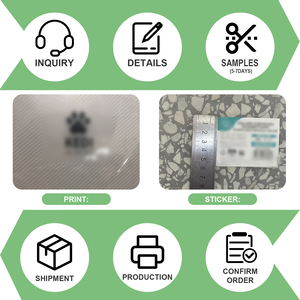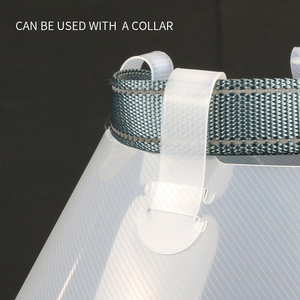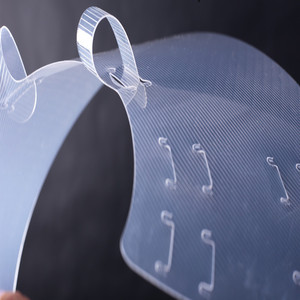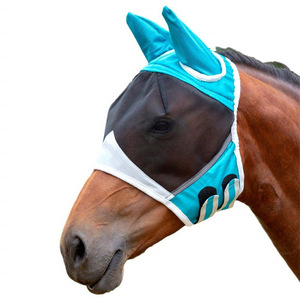(109851 products available)



























































































































































































Various horse equipments are available that are essential for the care and management of horses. These types include:
Riding Equipment
This type of horse gear is vital when participating in equestrian sports. It includes:
a. Saddles: A saddle is a seat made for the rider. It is a crucial part of horse racing gear that provides comfort, stability, and control to the rider. Different types of saddles are available, such as:
• General Purpose Saddles: These saddles suit different activities, including dressage, jumping, and hacking. It has a balanced design that offers comfort and support to the rider and the horse.
• Dressage Saddles: These saddles are made specifically for dressage. It has a deeper seat and longer, straight flaps, which provides the rider with the ability to control the horse using subtle cues.
• Jumping Saddles: These saddles have a design that provides stability and support when jumping obstacles. It has a shallower seat and shorter flaps, enabling the rider to move quickly when covering different obstacles.
• Endurance Saddles: These saddles are made for long-distance riding. It has extra padding and comfort features, reducing the soreness of the horse when riding long distances.
b. Bridles: A bridle is a piece of gear that a horse wears when riding. It is attached to the reins, which the rider uses to guide and control the horse. Different types of bridles include:
• Flat Bridles: These bridles are used for general riding. It has a simple design with a headpiece, noseband, and browband made of leather or synthetic material.
• Anatomical Bridles: These bridles are designed to reduce the pressure and discomfort of the horse. It has a padded headpiece, noseband, and browband with a more ergonomic shape.
• Dressage Bridles: These bridles have a raised and padded noseband and browband with a traditional design. It is used for dressage to provide a more precise and elegant appearance.
• Jumping Bridles: These bridles have a raised and padded noseband with a thicker browband. It is used for show jumping to provide a more stable and secure fit at high speeds.
Stable Equipment
Stable gear includes horse grooming tools and other stable equipment. For instance, a grooming kit contains brushes, combs, and sponges. These kits help to clean the horse's coat and remove dirt, mud, and loose hair. Other gear such as hoof picks, hoof rasps, and hoof brushes are essential for the care of a horse's hoof. A comfortable bed and a clean and dry environment are essential for the horse's well-being. The stable equipment also consists of feeding gear, which includes:
a. Hay Racks: These horse gear provides a convenient way for horses to access hay. It reduces waste and keeps the hay off the ground, improving hygiene.
b. Automatic Waterers: These horse waterers provide a continuous supply of fresh water. It ensures the horse stays hydrated even when the owner is not around.
Horse equipment is essential for effective and humane horse care, training, and competition. The various equipment serves numerous functions and is tailored to different activities involving horses.
Some of the scenarios where horse equipment is necessary include:
Daily Care and Management
Daily horse care demands essential equipment such as brushes, grooming tools, hoof care tools, and halters and lead ropes. These tools are vital for maintaining the health and well-being of the horse. For instance, regular grooming and hoof care are necessary to prevent discomfort and disease. Halters and lead ropes are necessary for handling and tying horses during daily activities.
Training and Exercise
Essential equipment is necessary for a horse's effective training and exercise. It includes saddles, bridles, lunge lines, and training aids. Different types of saddles and bridles are used for various riding disciplines. On the other hand, lunging and training aids help in groundwork and training. The horse is able to respond to cues in an effective manner.
Transportation
Horse transportation requires essential equipment for the comfort and safety of the horse. It includes horse blankets and sheets, travel boots and bandages, and horse trailers and vehicles. Horse blankets and sheets provide comfort and protection during transportation. In addition, travel boots and bandages protect the legs of the horse during transportation.
Competitions and Events
Competitions and events require specific equipment that is necessary for each equestrian sport. This includes show saddles, bridles, and jumps for jumping events, dressage saddles and bridles for dressage, and racing saddles and bridles for racing. Horse halters and other equipment are also used in various competitions.
Therapeutic and Comfort Applications
Horses experience discomfort and stress during transportation and intensive training. Therefore, they require therapeutic and comfort equipment such as massage tools, heat therapy wraps, and cooling boots. These tools help alleviate discomfort, reduce inflammation, and promote recovery. They also improve the overall well-being of the horse.
To choose the right horse equipment, one must consider the various factors surrounding the use of the equipment. For example, a horse's size may affect how one chooses a horse brush, halters, and other gear. Additionally, the intended use of the equipment can help one narrow down their choices to what will be useful for them. Other considerations, such as the material used to make the equipment and its durability, should also be considered.
When buying gear that will be in contact with the horse's skin, it is important to buy gear that is comfortable for the horse. The only way to ensure comfort is to get the horse a different size based on its size. There are many materials available, such as leather and synthetic materials. Leather is known for its durability and ability to withstand wear over time. It also offers a classic look that many equestrians prefer. On the other hand, synthetic materials are more affordable and require little maintenance. They have also improved significantly over the years and can last a long time.
Another thing to consider is how much maintenance the equipment will require. Leather saddles and bridles require regular oiling and cleaning to keep them soft and prevent them from drying out. On the other hand, synthetic gear needs little care and can be cleaned with soap and water. Consider the cost of each type of equipment and its durability. Leather gear is often more expensive but can last a lifetime with proper care. In contrast, synthetic gear is more affordable but may need to be replaced more often.
Ultimately, the decision comes down to personal preference and budget. Many people will opt for leather gear because of its durability and classic look. Others will prefer synthetic gear because of its low maintenance and affordability. Either way, the horse and rider will enjoy their time together.
To help customers understand how to choose the right equipment for their horses, here is a detailed breakdown of the function, features, and design of the various equipment.
Q: What is the most important piece of horse equipment?
A: It is hard to single out one vital piece of horse equipment as all the necessary items for a horse's care and wellbeing are crucial. Horses are large animals and require tools such as halters, saddles, and grooming kits for humans to interact with them effectively.
Q: What is the function of horse equipment?
A: Horse equipment is meant to facilitate the care of horses, provide comfort to the horse, and enable the human to control the horse. Each type of horse has its own set of equipment that a horse owner should be familiar with to ensure the horse's well-being.
Q: Why is it important to know the different types of horse equipment?
A: Different types of horse equipment are used in various equestrian sports and for different purposes. Knowing the types and their uses allows a horse owner to more effectively care for their horse and partake in different types of horse racing and shows.
The web search volume for the keyword "horse equipment" currently stands at an average of 2,900 monthly web searches, with a significant fluctuation observed over the past year. Despite a notable three-month decrease of 46%, the keyword experienced a substantial one-year increase of 53%. The detailed monthly data from November 2023 to October 2024 reveals a pattern of web search volume changes, peaking notably in August 2024 with 5,400 web searches.
Analyzing the monthly trends, "horse equipment" saw stable web search volumes from November 2023 to March 2024, consistently recording 1,900 web searches. However, from June 2024, there was a sharp increase, with web searches doubling to 3,600 in June and reaching a high of 5,400 by August. This peak was followed by a decrease to 2,900 web searches by October 2024. The fluctuations suggest a seasonal trend, with increased interest during the late summer and early autumn months.
This observed trend could be attributed to seasonal activities in the equestrian world, such as preparation for fall riding seasons or participation in autumn horse shows and events, which typically see heightened demand for related equipment. The data clearly indicates a cyclical pattern linked to the equestrian calendar, impacting search behaviors among enthusiasts and professionals alike.